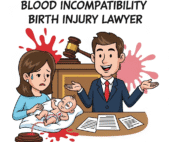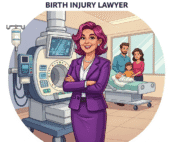For families navigating the complexities of Cerebral Palsy (CP), the potential co-occurrence of epilepsy can introduce another layer of challenges. Epilepsy, a neurological disorder characterized by recurrent seizures, is significantly more common in children with CP than in the general population. Understanding this connection, recognizing the signs of seizures, and knowing how to manage them are crucial for ensuring the safety, well-being, and optimal development of children with CP.
This article explores the relationship between epilepsy and Cerebral Palsy, discusses the different types of seizures that may occur, highlights the importance of accurate diagnosis, and outlines strategies for managing epilepsy in the context of CP.
Epilepsy on Children with Cerebral Palsy
The Link Between Cerebral Palsy and Epilepsy
The same brain injury or developmental abnormality that causes Cerebral Palsy can also disrupt the normal electrical activity of the brain, making individuals more susceptible to seizures. The specific type and location of the brain lesion in CP can influence the likelihood and type of epilepsy that may develop.
Factors that may increase the risk of epilepsy in children with CP include:
- Severity of Brain Injury: More extensive brain damage is often associated with a higher risk of epilepsy.
- Type of Cerebral Palsy: Some types of CP, such as spastic quadriplegia and hemiplegia, have a higher association with epilepsy compared to other types.
- Presence of Other Neurological Conditions: Co-occurring conditions like intellectual disability can also increase the risk.
Understanding Different Types of Seizures
Seizures can manifest in various ways, and recognizing the different types is essential for accurate diagnosis and management. Some common seizure types seen in children with CP include:
- Focal Seizures (Partial Seizures): These seizures start in one area of the brain. They can occur with or without loss of consciousness. Symptoms can vary widely depending on the brain area involved and may include motor movements (jerking, twitching), sensory changes (tingling, visual disturbances), emotional changes, or altered awareness.
- Generalized Seizures: These seizures involve both sides of the brain from the onset. Common types include:
- Tonic-Clonic Seizures (Grand Mal): Characterized by loss of consciousness, stiffening of the body (tonic phase), followed by jerking movements (clonic phase).
- Absence Seizures (Petit Mal): Brief episodes of staring or loss of awareness, often with subtle movements like eye blinking.
- Myoclonic Seizures: Sudden, brief, shock-like jerks of a muscle or group of muscles.
- Atonic Seizures (Drop Attacks): Sudden loss of muscle tone, causing the person to fall or slump.
- Tonic Seizures: Sustained stiffening of the muscles.
The Importance of Accurate Diagnosis
A thorough evaluation by a neurologist specializing in epilepsy is crucial for accurate diagnosis. This typically involves:
- Detailed Medical History: Including a description of seizure events, onset, frequency, and duration. Input from parents and caregivers is vital.
- Electroencephalogram (EEG): A test that measures the electrical activity in the brain and can help identify abnormal patterns associated with seizures.
- Brain Imaging (MRI): To visualize the brain structure and identify any underlying abnormalities that may be contributing to both CP and epilepsy.
- Video EEG Monitoring: Continuous EEG recording combined with video observation to capture seizure events and correlate them with brain activity.
Managing Epilepsy in Children with Cerebral Palsy
Managing epilepsy in the context of CP often requires a tailored approach, considering both conditions. Treatment strategies may include:
- Anti-Epileptic Medications (AEDs): Various medications are available to help control seizures. The choice of medication depends on the seizure type, frequency, and potential side effects, as well as interactions with other medications the child may be taking for CP-related symptoms.
- Ketogenic Diet: A high-fat, low-carbohydrate diet that can sometimes help reduce seizure frequency, particularly in children with difficult-to-control epilepsy.
- Vagus Nerve Stimulation (VNS): A small device implanted under the skin that sends mild electrical impulses to the brain via the vagus nerve, which can help reduce seizure frequency and severity.
- Deep Brain Stimulation (DBS): In rare and carefully selected cases of severe, refractory epilepsy, DBS may be considered.
- Epilepsy Surgery: For some individuals with focal seizures that originate from a specific area of the brain, surgery to remove or disconnect that area may be an option.
- Rescue Medications: Medications administered during a prolonged or cluster of seizures to stop them.
Managing epilepsy in children with CP also involves:
- Seizure Action Plans: Developing a clear plan with the medical team on how to respond to different types of seizures, including when to administer rescue medication and when to seek emergency medical help.
- Safety Precautions: Implementing measures to prevent injury during seizures, such as padding sharp corners and supervising during activities.
- Communication and Education: Ensuring that all caregivers, educators, and therapists are aware of the child’s seizure history and action plan.
- Addressing Co-occurring Conditions: Managing other CP-related challenges, such as motor impairments and communication difficulties, can impact epilepsy management and overall well-being.
For more information and support related to managing Cerebral Palsy and its associated conditions, you can find valuable resources at Managing Cerebral Palsy on CP Family Hope.
Moving Forward: Empowering Families and Improving Outcomes
The co-occurrence of epilepsy in children with Cerebral Palsy presents unique challenges, but with accurate diagnosis, comprehensive management strategies, and a collaborative care team, families can effectively navigate these complexities. Understanding the relationship between CP and epilepsy, recognizing seizure types, and implementing appropriate interventions are key to improving the safety, development, and quality of life for these children.
FAQs: The Impact of Epilepsy on Children with Cerebral Palsy
Why is epilepsy more common in children with Cerebral Palsy?
The brain injury that causes CP can disrupt the normal electrical activity in the brain, making it more prone to seizures. The extent and location of the brain lesion play a significant role.
What are the most common types of seizures seen in children with CP?
Both focal (partial) and generalized seizures are common. Tonic-clonic (grand mal) and focal seizures with impaired awareness are frequently observed.
Can anti-epileptic medications interact with medications used to manage CP symptoms?
Yes, potential drug interactions can occur. It is crucial for the neurologist and other specialists involved in the child’s care to be aware of all medications the child is taking to avoid or manage any interactions.
How can parents and caregivers help in managing their child’s epilepsy?
Parents and caregivers play a vital role by accurately documenting seizure events, adhering to the medication schedule, implementing safety precautions, communicating effectively with the medical team, and advocating for their child’s needs.
Does having epilepsy worsen the motor symptoms of Cerebral Palsy?
While seizures themselves don’t directly worsen the underlying motor impairment of CP, frequent or severe seizures can impact a child’s overall development, energy levels, and participation in therapies, indirectly affecting their progress.
👉 Fill out our FREE Consultation Form today to speak with a legal expert. Your case could make a difference.




